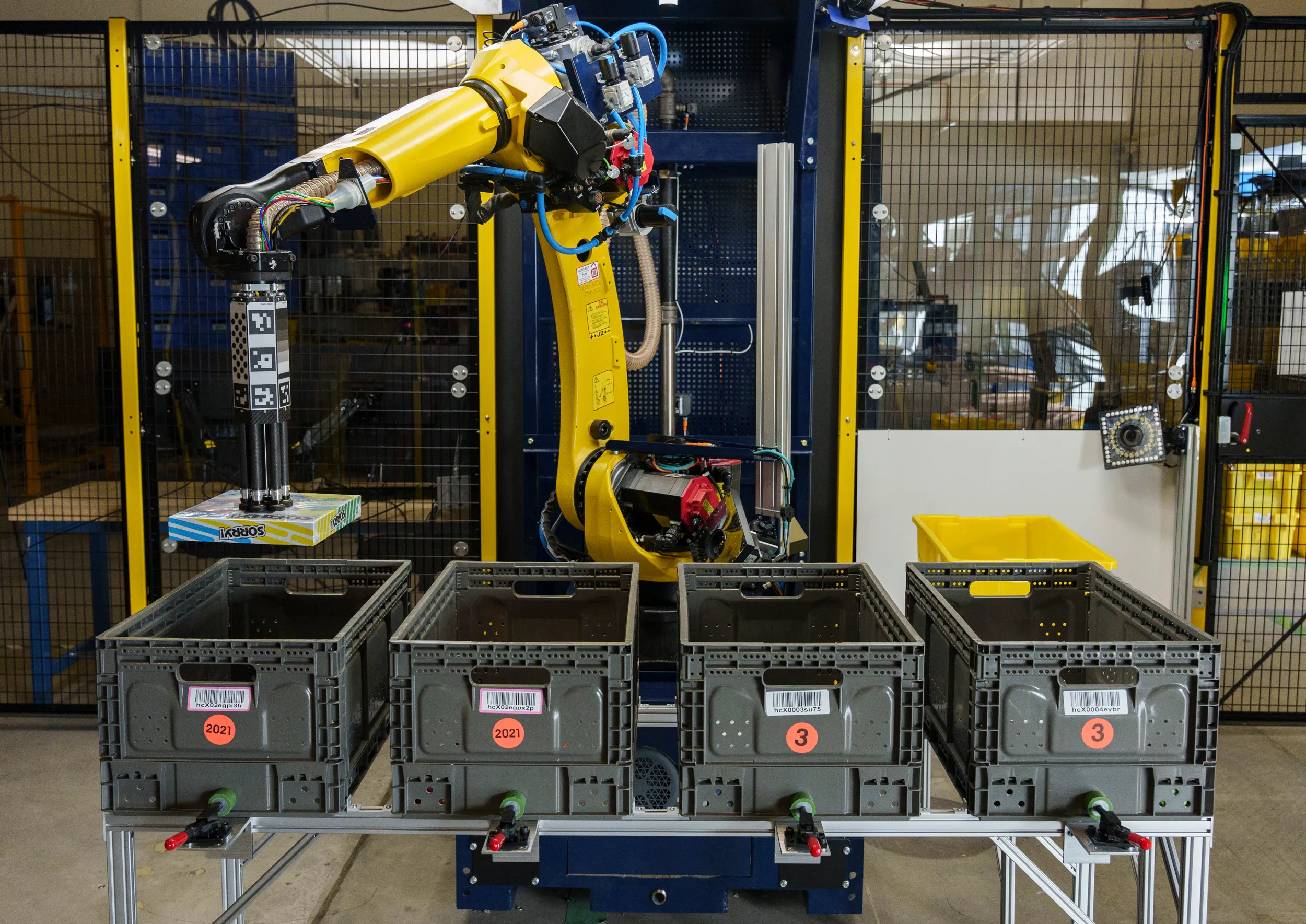

Last Thursday, Amazon announced the introduction of Sparrow, its first robotic system designed to identify, select, and handle millions of individual warehouse inventory items. At the same time, Sparrow supposedly minimizing employees’ repetitive tasks and improving worker safety.
Utilizing a combination of AI, computer vision, and a suction-cup “hand,” Sparrow is reportedly able to handling roughly 65 percent of all pre-packaged products available on Amazon’s website, according to the company’s own description. “Working with our employees, Sparrow will take on repetitive tasks, enabling our employees to focus their time and energy on other things, while also advancing safety,” reads Amazon’s official press release, which also describes the new system as “a major technological advancement to support our employees.”
[Related: Four workers die in Amazon warehouses across 22 days.]
As Business Insider reports, however, some workers are worried about their employer’s true motives behind Sparrow’s impending rollout. “[It] will take my job,” one warehouse worker told the outlet, who chose to remain anonymous for fear of company retaliation.
Amazon first introduced robots into its workforce in 2012, and has since deployed 520,000 robotic drive units globally capable of a variety of warehouse tasks. Sparrow will join the company’s previously announced Robin and Cardinal systems, both of which are meant to streamline and speed up warehouse tasks while supposedly freeing human laborers of mundane, repetitive, and often potentially dangerous responsibilities.

“Earth’s Best Employer” has a well-documented history of controversy. For example their on-the-job injury and fatality rates far surpass industry averages, and workforce turnover is so high that the company may “run out of prospective workers” in the US by 2024, according to one report. Although the company argues Sparrow’s imminent rollout will reduce the likelihood of warehouse workers hurting themselves while trying to maintain Amazon’s productivity quotas, some workers believe this could only exacerbate the existing issues. “They want you to compete with the robots. They want all the employees to compete with them. But who can win against a robot?” Mohamed Mire Mohamed, a former Amazon employee and current labor organizer, told Business Insider.
[Related: Amazon’s new warehouse employee training exec used to manage private prisons.]
While Amazon claims its expensive interest in robotics will ultimately be a net positive for employees, critics argue the reality will be far more automation at the expense of actual human positions within the company. “Instead of providing high-quality jobs and addressing the safety crisis it has created in its warehouses and on our roads, Amazon is investing in ways to maximize profits to the detriment of working people,” a spokesperson for Athena Coalition, a grassroots coalition focused on Amazon, said in a statement provided to PopSci. “If Amazon were concerned with keeping workers safe, they would stop union-busting, pay livable wages, and end the invasive surveillance and punitive management practices that are the real cause of the corporation’s safety crisis.”
Earlier this morning, The New York Times also revealed that Amazon is planning on cutting an estimated 10,000 jobs from its overall workforce, primarily within its “devices organization… as well as at its retail division and in human resources.” With over 1.5 million employees across the globe, the layoffs would represent roughly less than 1 percent of its overall workforce.
